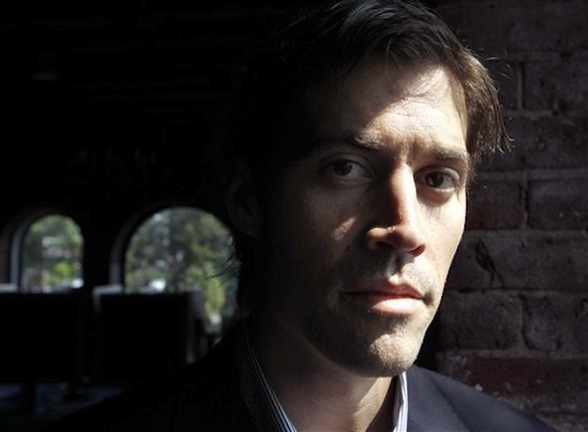 Foley James Foley is seen in Boston, where his former employer GlobalPost is located, in May 2011. (AP Photo/Steven Senne)
Foley James Foley is seen in Boston, where his former employer GlobalPost is located, in May 2011. (AP Photo/Steven Senne)
For the past two months, most of what was known of the horrors faced by kidnapped journalists James Foley and Steven Sotloff was limited to a pair of videos — snapshots of their executions at the hands of the Islamic State in Iraq and Syria. Both men were held hostage for more than a year. But few details of their long captivities had emerged.
That changed on Sunday with Rukmini Callimachi’s 4,500-word recreation of their imprisonment for The New York Times. Callimachi takes readers inside prison cells in Syria where ISIS held at least 23 Western hostages, including Foley and Sotloff. She details the tortures they endured, describes the ways they coped with pain, starvation, and boredom, and recounts Foley’s final days. This heart-wrenching narrative, meanwhile, sheds additional light not only on Western nations’ divergent policies on paying ransoms, but also the increasing sophistication of ISIS’ would-be bureaucracy.
“Inside their concrete box, the hostages did not know what their families or governments were doing on their behalf,” Callimachi writes. “They slowly pieced it together using the only information they had: their interactions with their guards and with one another. Mostly they suffered, waiting for any sign that they might escape with their lives.”
The two American journalists did not escape alive, of course. An attempt by US commandos to rescue them failed, and Washington refuses to pay ransoms. Other prisoners, many from European countries whose governments do come to the bargaining table, didn’t share the same fate. Callimachi interviewed five of them, she writes, along with “locals who witnessed their treatment, relatives and colleagues of the captives, and a tight circle of advisers who made trips to the region to try to win their release. Crucial details were confirmed by a former member of the Islamic State, also known as ISIS.”
What’s more, from interviews with translators who worked with Sotloff and Foley, the story depicts both journalists’ roadside kidnappings. They and other Western prisoners were interrogated, waterboarded, and passed between extremist groups that displayed varying degrees of brutality. The hostages mainly stuck together — Foley even organized a Secret Santa gift exchange to celebrate Christmas — and some of them found solace in Islam.
Extremist groups have stepped up kidnapping efforts in recent years to help fill their war chests. Callimachi has become a leading writer on the trend, reporting this summer how “kidnapping Europeans for ransom has become a global business for Al Qaeda.”
She began work on Sunday’s story in June, initially examining whether ISIS behaved similarly to Al Qaeda in its ransom demands. But a meeting with a freed ISIS captive, who agreed to speak with Callimachi on the condition of anonymity, pushed her story in a far different direction.
“I had dinner with him for five hours or so, and he just blew it open for me,” Callimachi told CJR by phone. “I had no idea there were 23 people [held by ISIS]. I knew there was James Foley…But it was mind-boggling to me that there could be so many others.”
Callimachi spent the next two months corroborating details from the man’s account, identifying other captives in the process. But she didn’t publish much of that information for fear of ISIS retaliation against prisoners. With Foley, at least, that fear was nullified when he was murdered on August 19.
“I spent a lot of time feeling almost paralyzed after Foley was killed,” Callimachi said. “The reason the story is so Foley-specific is that, after he was killed, I had license to write about him. It’s awful. And as the others were killed, then I had license to write about them, too. It’s horrific.”
The final section of Sunday’s story chronicles ISIS’ parallel schedules for releasing prisoners who could muster ransom payments and executing those who could not. It also reiterates that three hostages, including a British photojournalist, remain in captivity. The foreboding countdown ends with Foley’s counterparts, now free, reacting to the video of his execution.
Across Europe, those who had survived gasped when they saw the footage of their cellmate’s death: The cheap, beige-colored plastic flip-flops splayed next to Mr. Foley’s body were the same pair the prisoners had shared.
They had all worn those sandals to the bathroom.
Those who survived had walked in the same shoes as those who did not.
We can only hope that the remaining prisoners won’t have to follow in Foley’s footsteps. Callimachi, for her part, deserves a LAUREL for retracing them.
This post was updated after an interview with New York Times reporter Rukmini Callimachi.
David Uberti is a writer in New York. He was previously a media reporter for Gizmodo Media Group and a staff writer for CJR. Follow him on Twitter @DavidUberti.
